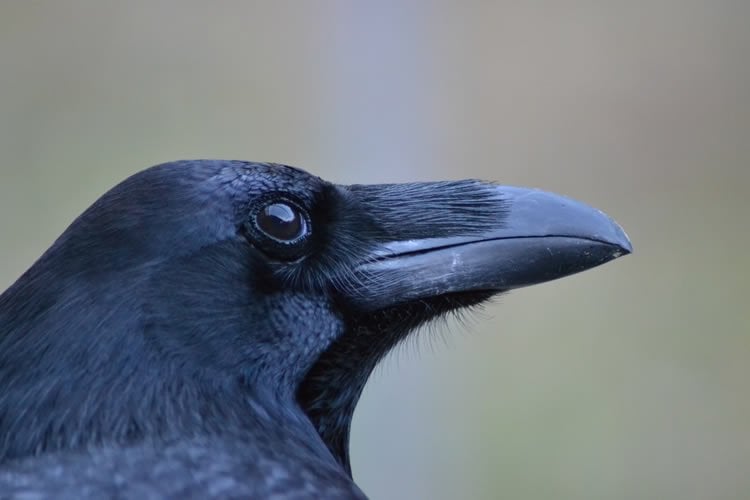Complex cognition is possible without a cortex. Researchers figure out similarities in brain architecture.
At first glance, the brains of birds and mammals show many significant differences. In spite of that, the cognitive skills of some groups of birds match those of apes.
Research results gathered in the recent decades have suggested that birds have sophisticated cognitive skills. According to one theory, they are able to apply those only in specific situations, for example when hoarding food. In a review article in the journal “Trends in Cognitive Sciences”, Dr. Onur Güntürkün from the Ruhr-Universität Bochum and Dr. Thomas Bugnyar at the University of Vienna demonstrate that this is not the case.
Together, both researchers compiled studies which had revealed diverse cognitive skills in birds. “The mental abilities of corvids and parrots are as sophisticated and diverse as those of apes,” says Onur Güntürkün, Head of the Department for Biopsychology in Bochum. Among other things, they are capable of thinking logically, of recognising themselves in the mirror and of empathy.
Complex cognition without cortex
In mammals, cognitive skills are controlled by the multi-layered cerebral cortex, also called neocortex. This brain structure does not exist in birds; instead, complex mental tasks are managed by the so-called pallium. Moreover, birds have much smaller brains than apes. “How, then, are birds capable of the same cognitive performance as apes?” asks Güntürkün. “Is it possible that very different brain mechanisms for complex cognitive processes have developed independently in birds and in mammals in the 300 million years of their existence?”
To address this question, he and his colleague analysed numerous neuro-anatomic studies. Their conclusion: on the whole, the brains of both animal groups have indeed very different structures. When examining them in detail, however, similarities have become apparent. Single modules of the brains, for example, are wired in a similar way, and both animal groups have a prefrontal brain structure that controls similar executive functions.
Origin of similarities is unknown
It is not known how these similarities have evolved. Either their last common ancestor passed the neuronal basis to birds and mammals. Or – and the authors consider this more likely – they evolved independently of each other, because both animal groups faced the same challenges. According to the researchers, this would mean that certain wiring patterns in the brain are necessary to boost cognitive performance.

“What is clear is that the multi-layered mammalian cortex is not required for complex cognition,” concludes Güntürkün. “The absolute brain weight is not relevant for mental abilities, either.” While ape brains weigh 275 to 500 gram on average, birds, who are just as skilful despite lacking a cortex, only manage 5 to 20 gram.
Source: Dr. Julia Weiler – RUB
Image Credit: The image is credited to Jana Müller.
Original Research: Abstract for “Cognition without Cortex” by Onur Güntürkün and Thomas Bugnyar in Trends in Cognitive Sciences. Published online March 1 2016 doi:10.1016/j.tics.2016.02.001
Abstract
Cognition without Cortex
Assumptions on the neural basis of cognition usually focus on cortical mechanisms. Birds have no cortex, but recent studies in parrots and corvids show that their cognitive skills are on par with primates. These cognitive findings are accompanied by neurobiological discoveries that reveal avian and mammalian forebrains are homologous, and show similarities in connectivity and function down to the cellular level. But because birds have a large pallium, but no cortex, a specific cortical architecture cannot be a requirement for advanced cognitive skills. During the long parallel evolution of mammals and birds, several neural mechanisms for cognition and complex behaviors may have converged despite an overall forebrain organization that is otherwise vastly different.
Trends
Cognition in corvids and parrots reaches the same level of excellence and diversity as in apes. Among others, bird cognition encompasses abilities such as delay of gratification, mental time travel, reasoning, metacognition, mirror self-recognition, theory of mind, and third-party intervention.
The cerebrum of birds and mammals is homologous but very differently organized.
Birds lack a neocortex but have instead several large pallial aggregations without apparent laminar structure. However, according to some scientists, these aggregations might correspond to cortical layers.
Independent from each other, birds and mammals have developed similar brain organizations that could constitute the neural basis of their cognitive skills. Birds have a functional analog to the prefrontal cortex that generates executive functions. Their telencephalic connectome is highly similar to that of diverse mammalian species and they show a ‘hidden’ lamination that resembles cortical canonical circuits in parts of their sensory pallial territories.
“Cognition without Cortex” by Onur Güntürkün and Thomas Bugnyar in Trends in Cognitive Sciences. Published online March 1 2016 doi:10.1016/j.tics.2016.02.001







